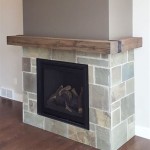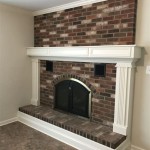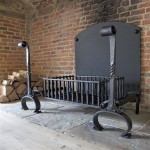Vented Gas Fireplace Logs: A Comprehensive Overview
Vented gas fireplace logs offer a convenient and aesthetically pleasing alternative to traditional wood-burning fireplaces. They provide the ambiance of a real fire without the associated mess, maintenance, and safety concerns of solid fuel. This article will explore the key aspects of vented gas fireplace logs, including their functionality, benefits, installation considerations, and maintenance requirements.
Understanding the Functionality of Vented Gas Fireplace Logs
Vented gas fireplace logs are designed to mimic the appearance of a natural wood fire. They are typically constructed from ceramic or refractory cement materials molded and painted to resemble various types of wood, such as oak, birch, or pine. These logs are arranged within a firebox and connected to a gas supply line, which fuels a burner located beneath the log set. When ignited, the burner produces flames that dance around and through the log set, creating a realistic fire effect.
A critical feature of vented gas fireplace logs is their reliance on a fully functional chimney or vent system. The combustion process produces byproducts, including carbon dioxide and water vapor, which must be safely exhausted outdoors. Vented log sets require an open damper during operation to ensure proper ventilation. This open damper allows for the upward flow of exhaust gases, preventing them from accumulating within the living space. Unlike ventless gas logs, vented models do not include an oxygen depletion sensor (ODS), as the ample ventilation provided by the chimney eliminates the risk of oxygen depletion.
The primary purpose of vented gas fireplace logs is aesthetic appeal. While they do provide some supplemental heat, their efficiency is significantly lower compared to other heating appliances. The open damper allows a substantial amount of heat to escape up the chimney along with the exhaust gases. Consequently, vented log sets are primarily chosen for their visual appeal and the ambiance they create, rather than for their heating capabilities.
Vented gas logs operate using either natural gas or propane. The specific type of gas required is determined by the design of the burner and the log set. It is essential to select a log set and burner compatible with the available gas supply. Converting a gas log set from natural gas to propane or vice versa may require modifications to the burner and gas valve, typically performed by a qualified technician.
Advantages and Disadvantages of Vented Gas Fireplace Logs
Vented gas fireplace logs offer several compelling advantages that make them a popular choice for homeowners. The most significant advantage is their convenience. Unlike wood-burning fireplaces, gas logs eliminate the need to purchase, store, and haul firewood. There is no mess associated with ash and soot cleanup, and the fire can be started and stopped with the flick of a switch or the press of a button on a remote control.
Another major advantage is the realistic appearance of modern vented gas log sets. Manufacturers have made significant advancements in the design and construction of these logs, creating highly detailed and realistic replicas of natural wood. The flickering flames and glowing embers further enhance the visual appeal, providing a convincing imitation of a traditional wood fire.
Vented gas logs are also relatively easy to operate and maintain. Once installed, they require minimal maintenance beyond periodic cleaning and inspection of the burner and gas connections. There is no need to tend to the fire or add fuel during operation, and the fire extinguishes quickly and completely when turned off.
However, vented gas fireplace logs also have certain disadvantages that should be considered. The primary disadvantage is their low heating efficiency. Due to the open damper, a significant portion of the heat generated by the fire is lost up the chimney, resulting in a lower overall heating output compared to other heating appliances. This makes vented log sets less suitable for primary heating purposes.
Another disadvantage is the requirement for a functional chimney or vent system. Homes without an existing chimney may incur significant costs to install one, making vented gas logs a less attractive option. Additionally, the open damper can contribute to drafts and heat loss when the fireplace is not in use.
The cost of operating vented gas logs can also be a factor. While the initial cost of the log set and installation may be comparable to other fireplace options, the ongoing cost of gas consumption can be higher due to the lower heating efficiency. The cost will vary depending on gas prices and usage frequency.
Installation and Safety Considerations for Vented Gas Logs
Proper installation is crucial for the safe and efficient operation of vented gas fireplace logs. It is strongly recommended to have a qualified professional install the log set and connect it to the gas supply line. A professional installer will ensure that the installation meets all applicable codes and regulations and that the log set is properly configured for the specific fireplace and gas supply.
Before installation, the existing fireplace should be thoroughly inspected and cleaned. Any debris, soot, or creosote buildup should be removed to ensure proper ventilation and prevent potential fire hazards. The chimney should also be inspected for any cracks, damage, or obstructions that could impede the flow of exhaust gases.
The size of the log set should be appropriately matched to the size of the firebox. Overly large logs can obstruct the burner and impede proper combustion, while overly small logs may not provide an adequate visual effect. The manufacturer's instructions will typically specify the recommended firebox dimensions for the specific log set.
The burner should be positioned correctly within the firebox to ensure that the flames are directed towards the logs and that the combustion gases are properly vented up the chimney. The gas supply line should be properly connected and tested for leaks. A gas shut-off valve should be readily accessible in case of emergency.
Carbon monoxide (CO) detectors should be installed in the home, particularly near bedrooms and living areas. CO is a colorless, odorless gas that can be produced by incomplete combustion. A properly functioning CO detector will alert occupants to the presence of CO, allowing them to evacuate and seek medical attention.
It is crucial to never block or obstruct the fireplace opening or the chimney flue. This can impede the flow of exhaust gases and create a dangerous buildup of CO. Furthermore, flammable materials should be kept away from the fireplace opening to prevent fire hazards.
Regular maintenance is essential to ensure the continued safe and efficient operation of vented gas fireplace logs. The burner should be periodically inspected for clogs or damage and cleaned as necessary. The logs should be inspected for cracks or deterioration and replaced if needed. The chimney should be inspected annually by a qualified professional to ensure that it is free of obstructions and in good working order.
It is important to adhere to all safety guidelines and recommendations provided by the log set manufacturer and local authorities. Failure to do so can result in serious injury or property damage.

Hargrove Mountain Timber Large Vented Gas Logs Only Hgmtsaalg

Hargrove Woodland Timbers See Through Vented Gas Logs Only Hgwtsst

Hargrove Inferno Vented Gas Logs Only Hgissaa

24 Charred Oak Vented Log Set G4 Ember Burner Peterson Real Fyre

Hargrove Double Stack Kodiak Char Large Vented Gas Logs Only Hgkcsds

Hargrove Aspen Timbers See Through Vented Gas Logs Only Hgatsst

Hargrove Grand Oak See Through Vented Gas Logs Only Hggosst

Vented Gas Logs Only Archives Hearth And Home Distributors Of Utah Llc

Rasmussen Ml Maanita Gas Logs Only

24 Valley Oak Vent Free Log G8 Ansi Bedroom Approved Burner Peterson Real Fyre
Related Posts








